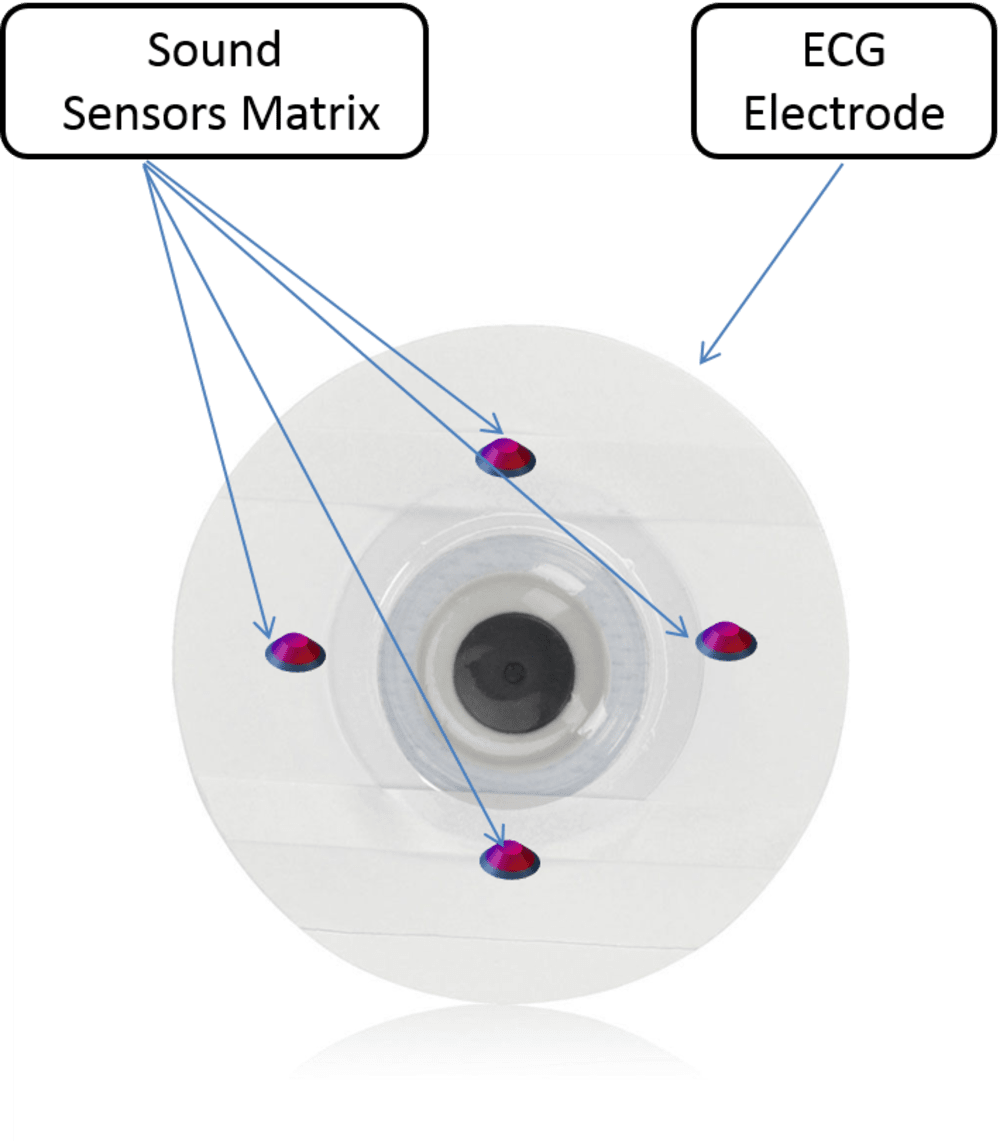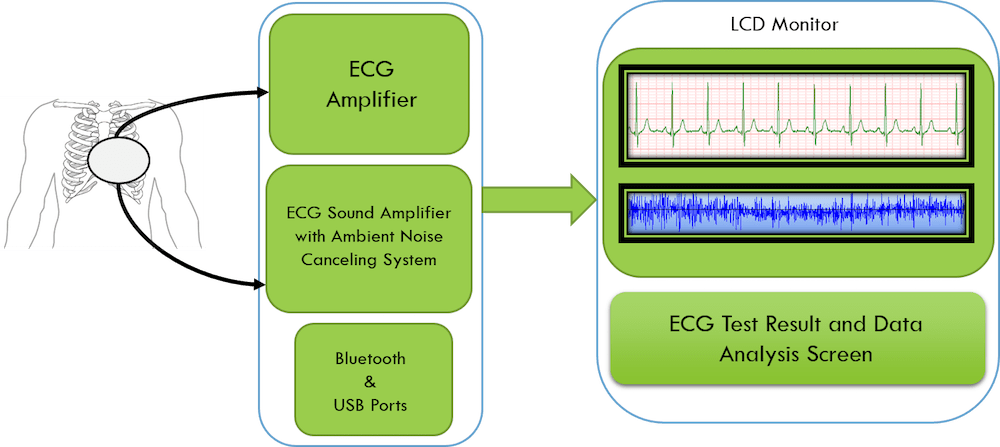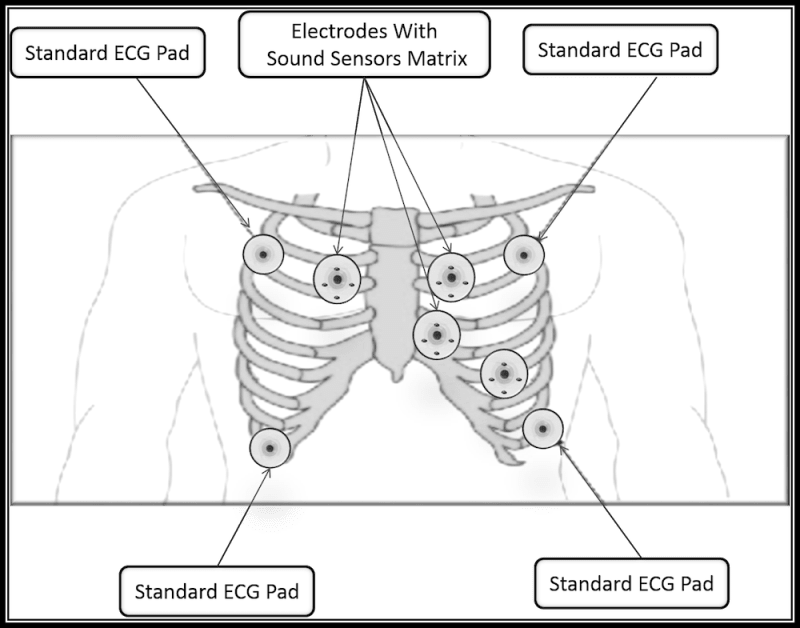Abstract:
Cardiovascular disease is the leading cause of death in the United States, killing over 800,000 a year (1 in 3 deaths). Heart attacks are an unpredictable emergency situation which is difficult to monitor and predict before permanent damage occurs. Once a patient is at the hospital symptoms may have subsided, and doctors are at a disadvantage in gathering pre-event data. For these reasons, people with suspected heart problems should monitor their ECG and other vital signs daily. Recording and saving this data is of significant diagnostic value in helping to diagnose and prevent future heart attacks.
The “Portable ECG Monitor with Stethoscope Auscultatory Sound Capturing Capability” described in this design idea provides extensive information about the condition of the heart. The captured ECG waveform and auscultatory sound data enable physicians to evaluate suspected murmurs and other heart dysfunctional conditions potentially circumventing a trip to the emergency room. Currently, there are only few portable ECG monitors in the market offering only capturing patient’s electrocardiogram (ECG).
Design Concept (Combined Cardiac Auscultation and ECG)
An electrode pad is modified with an array of CMOS MEMS (Micro-Electro-Mechanical System) monolithic digital sound sensors. The pad is embedded with four sensors covering 360 degrees of the patient’s skin contact area (Figure-1). This pad captures both electrical activity (ECG) and cardiac sound simultaneously. A specially designed cable carries these signals to the processor. Pad placement on the patient's chest vary with the type of monitoring desired (Figure-2). Examples for cardiac auscultation are Aortic, Pulmonic, Tricuspid and Mitral area. Examples for ECG are slow, fast or missed beats, and cardiac arrest. Both ECG and cardiac sounds are amplified and processed, filtered for ambient noise and artifacts and displayed on the monitor. It is possible to use mixed ECG pads such as those shown in Figure-2, the system automatically recognizes the Pad type and configure itself accordingly. The resultant data can be sent to a computer or smartphone via USB cable or Bluetooth for further analysis and emergency assistance in the case of cardiac arrest. Figure-3 is the simplified block diagram for this design idea showing both ECG waveform and the Cardiac sound on the handheld LCD screen with the final data analysis result.
Conclusion:
The global healthcare and medical device industry is worth billions of dollars and is expected to continue to increase. This industry include portable medical devices such as Blood pressure monitoring device, SPO2, Electrocardiogram (ECG) and many more.
A low cost and portable device like this design idea can save lives, and provide early warning to more serious cardiac abnormalities. Monitoring and recording electrocardiogram and the Auscultatory sound can provide valuable information to doctors for evaluating the problem in a timely manner and therefore preventing permanent damage, or death.
Like this entry?
-
About the Entrant
- Name:Michael Nasab
- Type of entry:individual
- Patent status:none








